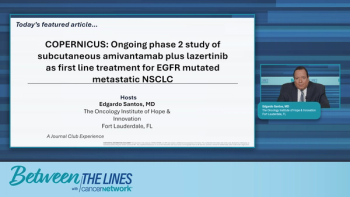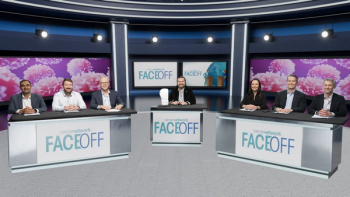
Future of Stage III: Concurrent vs Sequential CRT
Panelists discuss how the future of stage III non–small cell lung cancer treatment may shift from concurrent chemoradiotherapy toward sequential approaches with upfront systemic intensification (chemotherapy plus immunotherapy) followed by ablative radiation, mirroring successful surgical paradigms while acknowledging that concurrent therapy remains the current standard until proven otherwise.
Episodes in this series

Future of Stage III: Concurrent vs Sequential CRT
The debate centered on whether concurrent chemoradiotherapy (CRT) should remain the standard backbone for stage III non–small cell lung cancer or whether sequential approaches represent the future. Proponents of maintaining concurrent therapy emphasized its historical validation through randomized trials and meta-analyses showing survival benefits. They argued that modern concurrent regimens can use lower-dose, less toxic chemotherapy such as weekly carboplatin and paclitaxel, making treatment more tolerable while eliminating the need for adjuvant chemotherapy since immunotherapy follows. They acknowledged that stage III disease is highly heterogeneous and that selected subpopulations may benefit from alternative approaches, but concurrent chemoradiotherapy should remain the default backbone until proven otherwise by prospective trials.
Advocates for sequential approaches argued that stage III lung cancer is fundamentally a systemic disease requiring systemic intensification upfront, mirroring successful surgical paradigms where neoadjuvant chemoimmunotherapy has shown excellent outcomes. They contended that delivering systemic therapy first, independent of whether local therapy involves surgery or radiation, allows for maximal disease response and smaller radiation fields. Sequential delivery permits dose escalation using ablative radiotherapy techniques without the constraints of concurrent chemotherapy toxicity. They cited the failures of concurrent immunotherapy trials (PACIFIC-2, CheckMate 73L) as evidence that radiation delivery timing and technique must be reconsidered rather than abandoned. Both sides agreed that the negative PACIFIC-2 results present important questions about why concurrent immunotherapy with chemoradiotherapy failed. Potential explanations included lymphopenia from conventional fractionation affecting circulating immune cells, though this doesn’t explain similar negative signals in early-stage trials using stereotactic body radiotherapy.
The discussion emphasized the need for continued innovation through prospective trials testing different radiation schedules, doses, and timing with immunotherapy rather than abandoning these combinations entirely. All participants acknowledged that stage III disease encompasses tremendous heterogeneity requiring individualized treatment approaches based on disease volume, location, molecular drivers, and patient factors.
Newsletter
Stay up to date on recent advances in the multidisciplinary approach to cancer.




















































































